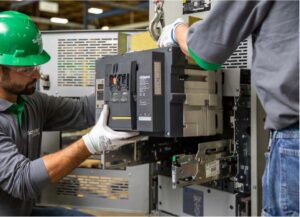Buildings presently account for approximately 40% of the world’s energy consumption, and that figure is on the rise. Experts project that energy consumption in buildings will increase substantially in the world’s most populous and fastest-growing countries, such as China and India. Beyond energy use, buildings also are responsible for nearly half of all greenhouse gasses, specifically carbon dioxide.
Building owners and facility managers are facing increasing pressures to reduce their energy consumption as national and local governments adopt more stringent sustainable energy policies. Regulations in some countries will even require by 2025—and in some cases by 2020—that all new buildings are neutral (a.k.a., net-zero) or even positive with regard to energy—which means that the building will have to produce at least as much as energy as it consumes.
How can this be accomplished? There are two separate but complementary approaches to reducing building energy consumption:
- Implementing energy efficiency measures
- Integrating renewable energy sources
To achieve optimal results and optimize investment, building energy efficiency measures should be considered first. This is especially true for existing buildings, where investments usually are made progressively over time.
For new buildings, the net-zero energy consumption requirement is specified in the early stages of the project. With such a goal clearly in mind, a building can be designed from the beginning to be net zero, ensuring that the building can incorporate renewable energy sources and will support active energy management systems and effective building operation.
Boosting energy efficiency
Energy efficiency measures also fall into two categories, passive and active.
Passive energy efficiency measures simply avoid the unnecessary use of energy. One example of a passive energy efficient measure is switching from conventional light bulbs to energy-saving lighting such as halogen incandescent, compact fluorescents (CFL), and LED lightbulbs, which produce the same amount of light but use less energy.
Active energy efficiency is about taking the control of the energy use. This type of energy efficiency measure typically requires continuous monitoring—using power measurement devices and cloud-based or on-premises power monitoring software—and active management, including an action plan and following up on results.
Figure 1Figure 1 shows how energy efficiency measures—both passive and active—in one existing U.S. office building have combined with the integration of renewable energy to dramatically lower energy use since 2006.
Incorporating renewable energy
Combined passive and active energy efficiency measures can significantly reduce a building’s energy consumption, and consequently the energy bill. But to become neutral or positive with regard to energy, it is essential to integrate clean, local energy sources. A future post will explain in more detail the various renewable energy technologies available for use in buildings. As of now, however, just know that photovoltaic (PV) is the main technology for buildings on the road to net-zero energy consumption. Even today a building’s PV installation may very often have the potential to fully cover its electrical energy needs.
Several factors determine the PV system size and capacity. The area available for the PV installation is one large factor in this regard. Frequently this consists primarily of the building rooftop. In existing buildings, the rooftop may be only partially available for PV panel installation. For example, there may already be equipment installed on the rooftop, or the building structure may not be sized to support the weight of the PV system. In other cases, the rooftop orientation or the building environment may not provide optimal conditions for maximal solar irradiance (i.e., how much energy you can count on being available). Having a car parking area on the building site represents a very large potential for installing additional PV panels. In certain types of structures, a building-integrated PV (BIPV) system with solar panels integrated into the façade or other parts of the building envelope may be an option. In such configurations, PV installation is integrated by design.
Other important PV system sizing factors include:
- the geographical location, which determines the solar irradiance,
- the building usage and type, and
- its energy consumption.
The way that the PV energy is used—self consumption or grid injection—does not play a role in the evaluation of the building energy. Indeed, most existing net-zero energy buildings export their energy to the grid.
A stunning net-zero energy building
Completed in 2014, Deloitte Netherlands’ The Edge headquarters building in Amsterdam is a model of sustainability. In addition to having a large rooftop, building-integrated PV system that covers the electrical needs of the building, the Edge is packed with sensors. These allow the highly integrated building systems to provide light, shade, ventilation and so on, all based on real-time data.
Such system integration is an essential part of making any building energy neutral. For The Edge, designers turned to Schneider Electric’s EcoStruxure™ and SmartStruxure™ controls and systems to intelligently link smart electrical distribution and field devices.
Read our case study to learn more about how The Edge is achieving industry-leading performance.
The next post in this series will be, “Power Up Your Next Building With These Renewable Energy Technologies.”



